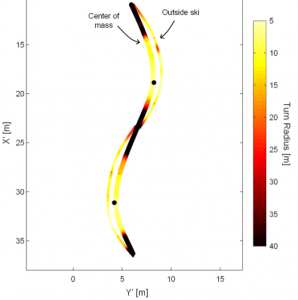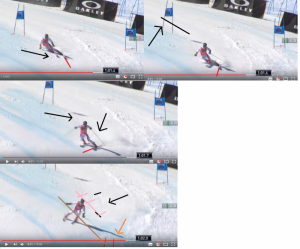So which argument are you trying to use this time???????

And what Doug, myself (and indeed everyone else in this thread!) was pointing out was what we try to get athletes doing as a default position. I don't recall any of us saying this happens
ALL the time, indeed it happens less than most of us as coaches would like! .

However it is still the fastest way for a racer. The longer you hang on to the ski below the middle of the turn the more you are fighting gravity and, equally important, the harder it is to start the switch to the new ski. Usually results in digging big ruts below the gate, fighting the hill and gravity then being late into the next gate and having to make a big movement (usually costing more time) to make the switch a lot later than you should have.
Are there times when you hold on pressure below the gate? Of course! If the set is taking you away across the hill, it will look like this. But you then need to look at what the shape of the turn is and where the actually belly of the turn is.! It may indeed be below the gate! And on other occasions a racer may decide that it is quicker for him to run a straighter line at an earlier gate and scrub some speed below the gated with late pressure or a stivot because that gives that racer a quicker line. It is often a good tactic coming on to a pitch (for example coming over the road on Fascination at Squaw) to scrub a little speed to get a clean entry rather than carry too much heat over it then struggle to make the next gate and be fighting for a few gates to get back ahead of the course, losing time all the way. (Look at Travis Ganong's winning run in the US nationals SG in 2013 at Squaw). And of course any racer that is pushing hard is going to run a less than perfect line at a few gates in a course. However they are all still staritng form the same premise that they strive to reduce pressure past the middle of the turn to gain speed.
But anyway, you keep telling yourself about your preferred theories, I will stick to the real world of helping my athletes get down the course quicker!




